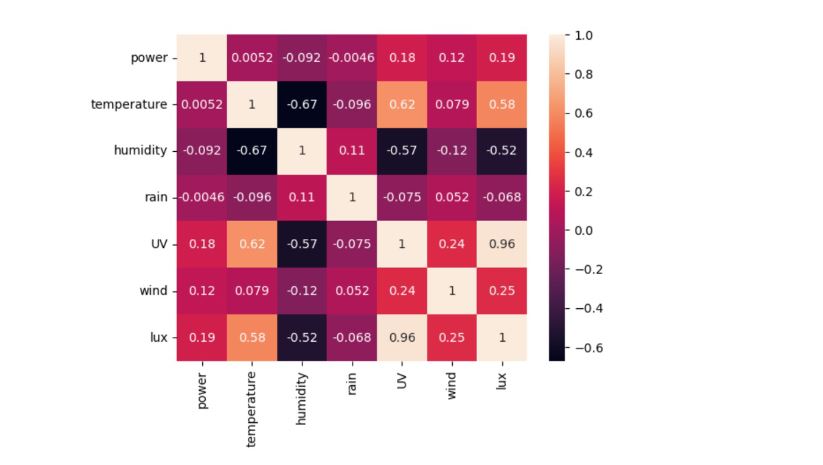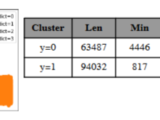
Publication des bureaux d’études Machine Learning & Optimization
31 janvier 2023Bonjour à tous,
Aujourd’hui, je vous propose la publication des articles produits par les élèves de 3ème année de la filière SGB de l’Ense3 pour leur projet tournant autour du Machine learning et de l’Optimisation.
Je vous souhaite une bonne lecture,
Jérôme Ferrari
Project 1: Estimation of electrical consumption & analysis
Authors
- Albert Granollers
- Mikayel Margaryan
Abstract
Currently, one of the hot topics in the engineering is the power supply in highly loaded
periods like, especially after last geopolitical crisis. According to EU commission, Russia’s
unjustified military aggression against Ukraine and its weaponisation of gas supplies
have provoked an unprecedented energy crisis for the EU. They have caused a sharp rise
in energy prices and brought hardship for Europeans. Thus, the EU commission is taking
strong action to address this.
In order to overcome unexpected challenges, one of the actions and policies published
in September 2022 is about new measures that were implemented to reduce electricity
demand and use energy surpluses for the benefit of citizens and industry. As a result,
the focus of this study will be on how to use collected data to create opportunities for
appropriate policies.
Report
Code
Project 2: Estimation of thermal Comfort based on CO2 level
Authors
- Kriti Baruah
- Priyadarshini Karthikeyan
Abstract
Air temperature and the Co2 level in a particular space play a vital role, it does not
only affect energy consumption, but also occupancy, thermal discomfort, ventilation
behaviour and building performance maintenance. The effect of air temperature and
CO2 level in the bedroom of the building is used to predict the thermal comfort of the
room. The paper aims to build a prediction model for thermal discomfort based on
the air temperature and the carbon dioxide level using a Linear Regression. The
CO2 level indoor environment ranges between 350 to 2500 ppm. It is important to
maintain the level in the range, to have lower thermal discomfort. The occupancy in
the room increases the air temperature, air circulation and CO2 level of the room. To
predict the CO2 level in the bedroom using the external and the indoor temperature
linear regression predictive model is used. The study measures the thermal
discomfort level and helps the user to take action towards optimizing the air
circulation and thermal comfort of the bedroom.
Report
Code
Project 3: Influence of Weather on Energy Consumption
Authors
- Sara IZADI
- Tiwalade OYEBODE
- AL-Mu’tez billah AL-SQOUR
Abstract
Demand prediction and demand response are becoming more and more crucial because
of the rising proportion of renewable energies in the electrical mix and the accompanying
unpredictability of electricity generation. The need for electricity frequently varies
with the weather; for example, when it is cloudier, there is a greater demand for inside
illumination. Solar panels are also currently producing less electricity than usual. Order
to ensure grid stability and timely activation of backup resources, this requires the forecasting
of the electrical demand. The necessary generation can then be coordinated by
grid operators to meet the demand. In this work, we evaluate a decision tree regression
performance in estimating the electricity consumption and gas usage of a smart home
using weather information. Wind, rain, and UV index are the factors employed. The
property is equipped with gas heating. This study’s objectives are to identify the meteorological
factors best suited for use in making predictions of this nature and to identify
plausible reasons for the findings. However, obtaining the most precise results is not the
objective. Many more variables, such as historical energy use (from a week ago, today,
etc.), must be taken into account to produce a performance that is more accurate.
Report
Code
Project 4: Estimation of Energy Consumption in a Smart-House via meteorological variables
Authors
- Germán Alejandro Niño Pallares
- José Ricardo Cabral Vianna
Abstract
Among the perks of disposing of several sensors in a smart house lies the possibility
of analyzing how the different sources of data can be used to estimate different
parameters of interest. In the past this study would be carried out with different
outlooks but the most predominant would remain being an empirical approach
which would need a good amount of experience to make it work. Nowadays we
possess larger amounts of data and tools that may allow us to find correlations
between data that are not to follow a deterministic nature but are easily modifiable in
order to find the best results. In this scope, the present report verses on how to use
meteorological data in order to estimate energy consumption for a smart house.
Report
Code
Project 5: Impacts of weather variation on air quality
Authors
- Ahmad Opeyemi ZUBAIR
- Ismam BIN HASNAT
Abstract
Air quality in residential places is a growing concern, as it can have significant effects on
the health and well-being of individuals living in these areas. Exposure to Poor air quality
can lead to a variety of health complications, including respiratory problems, headaches,
and fatigue. In addition, it can also contribute to the deterioration of indoor surfaces
and possessions. Therefore, it is essential that steps are taken to ensure good air quality
in residential spaces.
Report
Code
Project 6: Impacts of weather variation on air quality
Authors
- Jui-Lien Hsia
- Anujraaj Gopalsamy Sakthivel
Abstract
The forecasting of residential electricity demand has become
a critical aspect in the development of sustainable energy systems. Accurate
prediction of electricity consumption patterns is essential in order to maintain
a stable energy supply and prevent overloading the grid. The present study
aimed to explore the effectiveness of the Stride TCN model in forecasting electricity
demand using data obtained from a Raspberry Pi. The collected data
underwent a rigorous preprocessing stage, which involved transforming the raw
time series data into a format suitable for training the model. Through the
use of the Stride TCN model, the study was able to demonstrate the potential
of deep learning models in predicting residential electricity demand with
high accuracy. This research sheds light on the importance of incorporating
cutting-edge machine learning techniques in energy forecasting and highlights
the significance of precise demand forecasting in the development of a sustainable
energy future.
Report
Code
https://github.com/anujgs/MLO-Project-2
Project 7: Occupancy estimation
Authors
- Patricia Martínez Ruiz
- Leticia Tejedo Cerrato
Abstract
In this project we want to build a model that allows us to determine the presence
or not of individuals in the living room of the house. To carry out the estimation, we
will need to get access to the different measures from the sensors. For that, the
first step is to choose which ones we need.
Report
Code
Project 8: Smart Home-Measuring the correlation between Energy Consumption and Weather
Authors
- Manu Rajesh
- Omar Khalil
- Hussein Khalife
Abstract
Forecasting power consumption is a critical aspect of energy management, as it helps
in ensuring a stable and reliable electricity supply. Weather conditions play a significant
role in determining power consumption, with factors such as temperature, humidity, and
luminosity affecting the demand for electricity. For example, cold weather entices people
to utilize more electricity for heating.In this study, we aim to explore the relationship
between weather data and power consumption by developing a predictive model based
on decision tree classifier. By analyzing the correlations between weather variables and
power usage, we aim to identify the key factors that drive power consumption and gain
insights into the behavior of the system. The model will be developed using a dataset of
weather data and power consumption readings, and will employ advanced statistical
techniques and to establish the relationship between the two variables. The goal of this
study is to provide a more accurate and robust method for predicting power
consumption, which can help utilities and energy providers to better manage energy
supply and demand.
Report
Code
Project 9: Electrical Consumption Estimation in the Smart Home
Authors
- Shariq NADEEM
- Solomon Berihu ARAYA
Abstract
Demand prediction and demand response are becoming more and more crucial because
of the rising proportion of renewable energies in the electrical mix and the
accompanying unpredictability of electricity generation. The need for electricity
frequently varies with the weather; for example, when it is cloudier, there is a greater
demand for inside illumination. Solar panels are also currently producing less electricity
than usual. In order to ensure grid stability and timely activation of backup resources,
this requires the forecasting of the electrical demand. The necessary generation can
then be coordinated by grid operators to meet the demand.
Report
Code
Project 10: Should I open the window? How to detect the optimal temperature and air flow for a room
Authors
- Constanza MUÑOZ FILIPPIG
- Francisco Javier CUESTA ELIAS
Abstract
Buildings are a vital stakeholder toward energy savings. Advanced research has been done on this
domain to adapt and change behaviors for an efficient use of the energy inside them. From using
better insulation materials to sensors acquiring data to make decisions on the optimal temperature or
amount of air flowing; these controls will allow to make cuts on the energy bill. Smart buildings are
currently developed not only on new construction projects, which are a must, but also on actual
existent buildings which are adapted to these new technologies to really generate an impact on
reducing energy consumption.
In this project, an analysis is made on the living room which includes multiple sensors. The data
obtained by them will undergo a treatment and a machine learning model will be executed to
understand the relation between these factors and answer to the following question: When is the right
moment to open the window considering to avoid bad indoor air quality. It’s relevant to know what
can happen if air quality is not good and the effects it might have on the human body, taking into
account the recent development of diseases that can be transmitted through air such as COVID-19.
Temperature impact will also be taken into account for window opening.
Report
Code
Project 11: Should I open the window? How to detect the optimal temperature and air flow for a room
Authors
- Julián Felipe Giraldo Cruz
- Hugo Ronaldo Paipa Chaparro
Abstract
Energy consumption in residential buildings depends for now in human behaviors, weather conditions, etc. During this report we want to predict the energy consumption in a residential building depending on the quantity of CO2, temperature and humidity using machine learning methods. Specifically in this study we used supervised learning with linear regression and Decision tree classifier.
Report
Code

